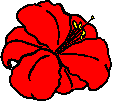 Shields
Gardens
Ltd.
Shields
Gardens
Ltd.| Home |
| Daylilies |
| Rare Bulbs |
| Clivia |
| Seed Sales |
| E-Mail and Chat |
| Photo Gallery |
| Information |
| Sources |
| Guest Sites |
| Societies and Clubs |
| Links |
| People |
| About Us |
The famous yellow-flowered clivias once sold for enormous prices, and a few still do. For the most part, there are now plenty of the yellows in cultivation. We can buy seeds of them at comparatively reasonable prices, $6 per seed or less.
Two of the most famous yellow clivias from the wild were 'Kirstenbosch Yellow' and 'Howick Yellow'. Both are what is referred to aa genetic Type 1 yellow. There is a second genetic type of yellow flowered clivia, the Type 2 yellow. 'Natal Yellow' and 'Transkei Yellow' are both Type 2 yellows. Other well-known yellows such as 'Vico Yellow' and the strain of Nakamura Yellows are also Type 1 yellow.
The orange pigment in typical clivia flowers is an anthocyanin. When you cross two Type 1 yellow clivias, 100% of the seedlings from that cross will be yellow flowered. If you cross a Type 1 yellow with a normal orange C. miniata, the first generation of seedlings (F1) will all have some shade of orange flowers. If you then cross the F1 siblings among themselves, their offspring, the second generation or F2, will have about 25% yellow flowered plants and 75% orange flowered.
Similarly, if you cross two Type 2 yellow clivias, 100% of the seedlings should be yellow-flowered. Likewise, crossing a Type 2 yellow with a normal orange-flowered miniata will give 100% tints and shades of orange in the F1 generation.
Even more interesting, if you cross a Type 1 yellow with a Type 2 yellow, 100% of the F1 seedlings will be orange flowered. The two types of yellow genes will not produce yellow in the first generation.
We can say that the Type 1 yellow gene occurs at a different location in the chromosomes from the site of the Type 2 yellow gene. Further, this shows us that both the Type 1 yellow gene and the Type 2 yellow gene are recessive.If we call the Type 1 yellow gene "y1" if yellow and "Y1" if orange; y1 and Y1 are two different "alleles" of the same gene. Call the Type 2 gene "y2" if yellow and "Y2" if orange. Then we can represent the genes of a Type 1 yellow as y1,y1,Y2,Y2 while the Type 2 plant would have genes Y1,Y1,y2,y2.
The pollen and the ovules of a Type 1 plant will all be y1,Y2 while they will all be Y1,y2 for a Type 2 plant. We can show how crossing a Type 1 with a Type 2 works with a simple table.
| y1,Y2 | |
|---|---|
| Y1,y2 | y1,Y1,y2,Y2 orange |
The genotypes of the F1 plants are all the same: y1,Y1,y2,Y2
The pollen and the ovules of the F1 plants can be of 4 different types: y1,y2 or y1,Y2 or Y1,y2 or Y1,Y2 if we assume that the two gene distribute independently of each other in formation of the pollen and ovules. The F2 plants then will be as follows:
| y1,y2 | y1,Y2 | Y1,y2 | Y1,Y2 | |
|---|---|---|---|---|
| y1,y2 | y1,y1,y2,y2 yellow | y1,y1,Y2,y2 yellow | y1,Y1,y2,y2 yellow | y1,Y1,y2,Y2 orange |
| y1,Y2 | y1,y1,y2,Y2 yellow | y1,y1,Y2,Y2 yellow | y1,Y1,Y2,y2 orange | y1,Y1,Y2,Y2 orange |
| Y1,y2 | y1,Y1,y2,y2 yellow | y1,Y1,Y2,y2 orange | Y1,Y1,y2,y2 yellow | Y1,Y1,Y2,y2 orange |
| Y1,Y2 | y1,Y1,y2,Y2 orange | y1,Y1,Y2,Y2 orange | Y1,Y1,y2,Y2 orange | Y1,Y1,Y2,Y2 orange |
This shows how you get the results that the F2 generation is 1/16th yellow in both Type 1 and Type 2 genes, while 6/16ths are yellow due to either the Type 1 or the Type 2 genes being homozygous, and 9/16ths show tints or shades of orange.
For more information see:
| Tel: 1-317-867-3344 | ||
For information about this account, contact:
James E. Shields, webmaster
31 March 2011
© Copyright 2011 by SHIELDS GARDENS LTD. All rights reserved.